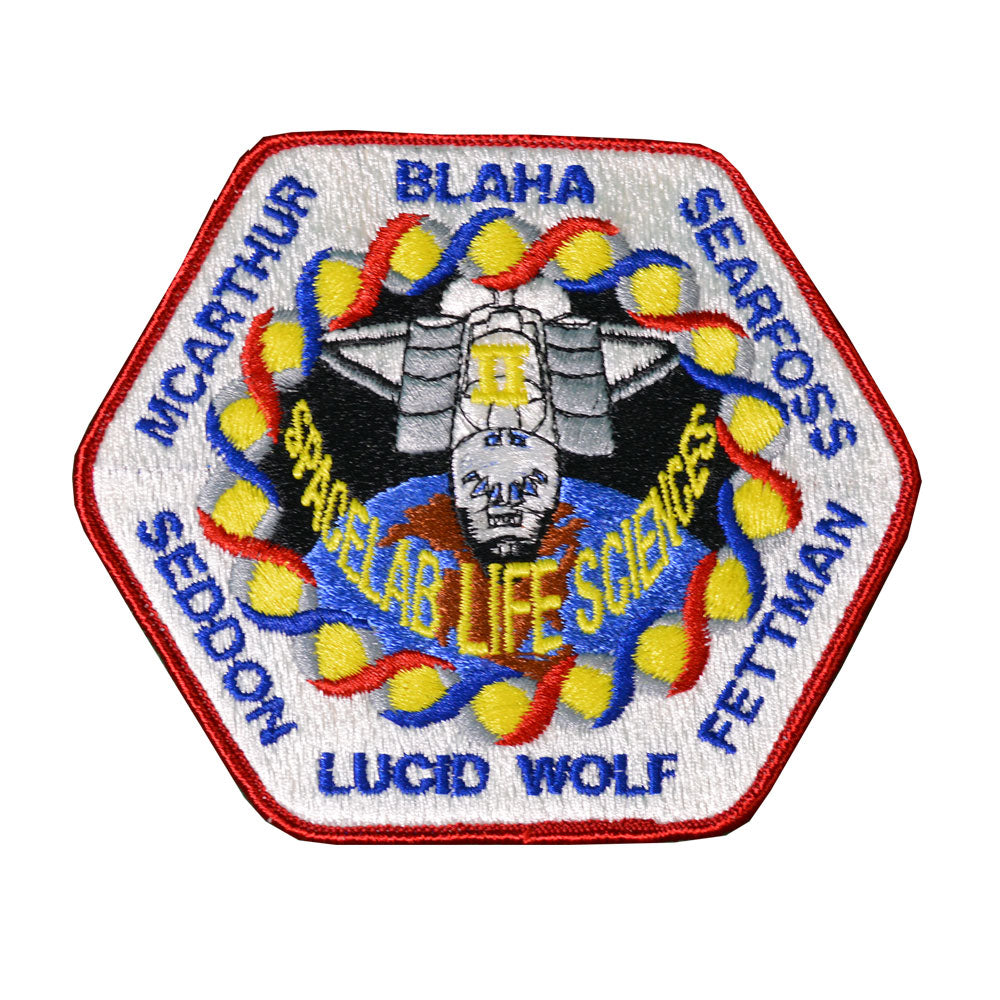
STS-58 Patch
Mission Highlights
Second dedicated Spacelab Life Sciences mission (SLS- 2). Fourteen experiments conducted in four areas: regulatory physiology, cardiovascular/cardiopulmonary, musculoskeletal and neuroscience. Eight of the experiments focused on crew; six on 48 rodents. Crew collected more than 650 different samples from themselves and rodents, increasing statistical base for life sciences research. Combined data from SLS-1 and SLS-2 will help build comprehensive picture of how humans and animals adapt to weightlessness.
Cardiovascular investigations: Inflight Study of Cardiovascular Deconditioning; Cardiovascular Adaptation to Zero Gravity; Pulmonary Function during Weightlessness. Regulatory physiology investigations: Fluid Electrolyte Regulation during Space flight; Regulation of Blood Volume during Space flight; Regulation of Erythropoiesis in Rats during Space flight; Influence of Space flight on Erythrokinetics in Man. Musculoskeletal investigations: Protein Metabolism during Space flight; Effects of Zero Gravity on the Functional and Biochemical Properties of Antigravity Skeletal Muscle; Effects of Microgravity on the Electron Microscopy, Histochemistry and Protease Activities of Rat Hindlimb Muscles; Pathophysiology of Mineral Loss during Space flight; Bone, Calcium and Spaceflight. Neuroscience investigations: Study of the Effects of Space Travel on Mammalian Gravity Receptors; Vestibular Experiments in Spacelab.
For one of the neurovestibular experiments, the Rotating Dome Experiment, crew worked with first flight prototype of Astronaut Science Advisor (ASA), a laptop computer designed to assist astronauts conducting experiments; also called “principal investigator in a box” because it can increase efficiency of experiment activities.
Six rodents were killed and dissected during mission, yielding first tissue samples collected in space and not altered by re-exposure to Earth’s gravity.
Other experiments: Orbital Acceleration Research Experiment (OARE); Shuttle Amateur Radio Experiment (SAREX). Also performed: Pilot Inflight Landing Operations Trainer (PILOT), portable laptop computer simulator to allow pilot and commander to maintain proficiency for approach and landing during longer missions.


